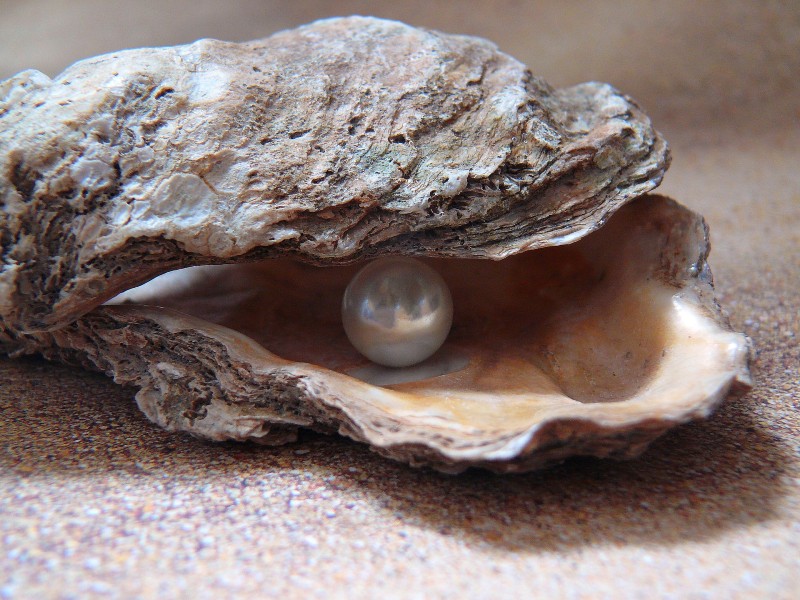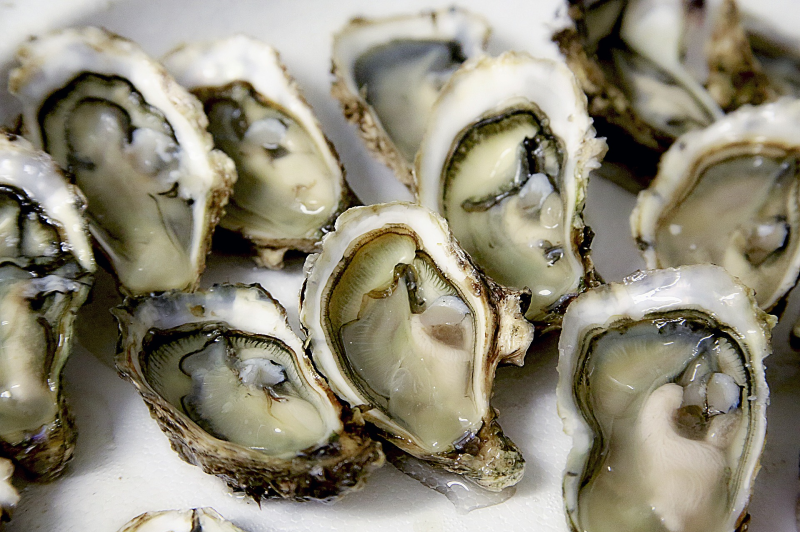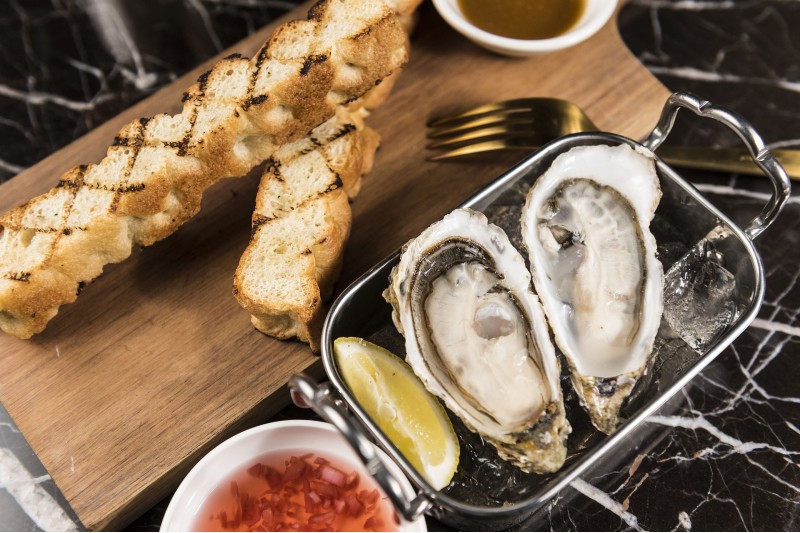What’s the Odds of Finding a Pearl in an Oyster?

If there’s one shellfish that’s full of surprises, it’s the oyster! The word oyster is the common name for several families of salt-water bivalve molluscs. These famous shellfish are known the world over for their delicate flavour and beautiful pearls. But did you know there are many different types of oysters, and that the oysters we eat are not considered to be “pearl oysters”? That doesn’t mean that oysters farmed for the food industry can’t produce a pearl – quite the opposite in fact – but that the pearls are not as valuable. Their pearls tend to be smaller and have less lustre. However, every now and then, an edible oyster (also called a true oyster) manages to surprise everyone by producing a beautiful pearl! In other words, your oyster appetizer could contain a hidden treasure. What are the odds of having such luck? JackpotCity online casino has researched the chances of finding a pearl in your appetizer. Keep reading to find out more…
Congratulations! It’s a pearl!
Stories of people finding a pearl in their plate of oysters pop up frequently in newspapers and on the web. Let’s take a look at a few recent stories… In New York, in 2018, two people found pearls in restaurant oysters in a single month! Kristin Pulaski, 29, chomped down on an oyster at the Williamsburg Bar Maison Première and hit something she wasn’t expecting. It was pearly and white and turned out to be a natural pearl worth roughly US$200. To her astonishment, she later discovered that another New Yorker, Rick Antosh, 66, had also found a pearl ten days earlier while he was eating lunch at Grand Central Oyster Bar. Antosh’s pearl was valued at around US$400.
Closer to home, in 2011, near Bank’s Peninsula, a 6-year-old from Halswell was playing in the sand when something peeking out from an oyster shell caught her eye. Thinking it was a white marble, she stashed it in her pocket to show mum and dad. When she showed her parents the treasure, they thought it was a marble too. However, it turned out to be a large, smooth and shiny natural pearl. A local oyster expert, Roger Beattie, the owner of Eyris Blue Pearls in Christchurch, was astounded by this lucky find. He thinks it might be the first large, high-quality, natural pearl ever found in New Zealand. He describes the pearl as a “free pearl”, which means didn’t develop while attached to the oyster’s shell. Consequently, this pearl is rounder and perfectly smooth. All in all, Beattie estimated the 12mm pearl to be worth thousands of NZ dollars in 2011.
Another recent oyster surprise occurred in Vancouver, British Columbia, in late 2019. Eric Bourquin, and his wife were having pan-fried Pacific oysters with their friends when his wife looked across the table at her husband and thought he was choking. Before she had time to start doing the Heimlich Manoeuvre on him, she realised that he was actually spitting out pearls! Every time the guests thought he had finished, out popped another pearl! At the end, Bourquin had a pile of 48 pearls on his plate, all from a single oyster! In Bourquin’s case, the pearls had little commercial value, but the experience of finding them with his family and friends at dinner: priceless. Tim Green, a shellfish researcher from Vancouver Island University, who was asked to comment on the story, said that he wasn’t surprised by what had happened. He has found many little pearls in Pacific oysters over the years while studying molluscs. He even has one very special, pea-sized pearl that he found many years earlier while dining at a restaurant in Seattle.

How are pearls made?
The British Museum of Natural History explains how a pearl is made on its website: “Pearls are made by marine oysters and freshwater mussels as a natural defence against an irritant such as a parasite entering their shell or damage to their fragile body. The oyster or mussel slowly secretes layers of aragonite and conchiolin, materials that also make up its shell. This creates a material called nacre, also known as mother-of-pearl, which encases the irritant and protects the mollusc from it. When pearls are cultured commercially an irritant is manually inserted into a mollusc to promote the production of mother-of-pearl.”
Natural pearls are incredibly rare and far more valuable than cultured pearls. To make a cultured pearl, someone must open the shell of an oyster just a few millimetres wide, make a small incision in the fleshy part of the oyster, and insert a mother-of-pearl bead. The oyster will then begin to coat the bead in nacre to eventually create a pearl. Some oysters can make pearls to be harvested more than once, while others die on the first harvest. One of the most sought-after types of cultured pearl is made by the Akoya oyster. This oyster can be “nucleated” with up to five beads at a time, although two beads is more common. Upon harvesting the pearls the Akoya oyster dies. However, the most expensive of all cultured pearls, the South Sea pearl, is made by a type of oyster that can only produce one pearl at a time, but these oysters can be nucleated several times in a row.
What are the odds of finding a pearl in your oyster?
After reading about these lucky finds, you may be wondering whether it’s time you started eating more oysters yourself. It’s only natural… At JackpotCity online casino, we were curious too! So we did a little digging on the internet and a little basic maths to figure out the odds of finding a pearl. Could eating oysters to find pearls ever pay off?
At the Grand Central Oyster Bar in New York, an oyster of the type that Rick Antosh consumed costs roughly US$2. The odds of finding a valuable pearl in an oyster are estimated to be approximately 1 in 10,000 (up to 1 in 12,000 depending on the type of mollusc). Consequently, based on these figures, you would have to eat at least US$20,000 worth of oysters to find one pearl worth approximately US$400. Not a great investment. But if you really like oysters and you’re going to eat them anyway, remember to chew carefully! I’ll tell you why…

Increase your odds by chewing
If you chew your oysters carefully you will have a much higher chance of finding a pearl. When interviewed about Kristin Pulaski’s pearl, Joshua Boissy, co-owner of the restaurant, told the New York Post that it was the first time a pearl had ever been found in his restaurant. The restaurant had been open for eight years and had already served over 4 million oysters… Judging by these figures, there is a 1 in 4 million chance of finding a pearl in this particular restaurant, right? No, because, as Pulaski told the New York Post: “I’ll usually bite down on oysters a few times because I like the taste, but I know some people just swallow it whole […] So maybe people swallow pearls more than they think”. If the 1 in 10,000 estimate is correct, that means 399 pearls have been swallowed by customers since the restaurant opened. Food for thought.
Another helpful tip: if you’re looking for a pearl, don’t cover your oysters with vinaigrette. Vinegar can dissolve pearls. On this subject, there is a famous story about Cleopatra and Mark Anthony told by Pliny the Elder… Cleopatra once made a wager with Mark Anthony that she could throw the most lavish, expensive feast in history. After a decadent feast, Cleopatra removed a large pearl from one earring and dropped it into a cup of wine vinegar. Once the pearl had dissolved, she drank the wine vinegar. As she was reaching for the second earring to drop it into the vinegar too, Lucious Plancus (the adjudicator of the bet) put his hand over the other pearl to stop her, declaring Cleopatra to be the winner. Writers of the period say that just one of these pearls was worth the value of 15 small countries! Cleopatra seemed to enjoy high-stakes gambling, but we prefer safer, more reliable online casino betting at JackpotCity.
What does it feel like to find a pearl in an oyster?
Unpleasant. When Pulaski bit down on her pearl, she thought she’d bitten into a screw. Rick Antosh was horrified when he felt something hard rolling around in his mouth: he thought it was a tooth or a filling. Of course, it won’t dissuade him from eating more oysters and he confirmed he would be returning to Grand Central Oyster Bar to search for more pearls. Eric Bourquin thought he was munching on small rocks: “they really crunched” he said.
What kind of shellfish produce pearls in New Zealand?
The Bluff oyster is known for its meaty, salty flavour, but unfortunately not for its pearls. Like any oyster, they can produce pearls, but these pearls have little commercial value. There are also Pacific oysters in New Zealand and Rock oysters too. The Pacific oyster is another oyster that is better for eating than making pearls. The most valuable pearl in New Zealand is a cultured pearl, called the New Zealand blue pearl, and it’s actually produced by a sea snail, abalone.
New Zealand’s blue pearls are a cultured pearls produced on paua farms. Paua, or abalone, is actually a member of the sea snail family. It was originally a French scientist named, Louis Boutan (1859–1934), who invented the first mabe cultured pearls from abalone. (A mabe pearl is a hemispherical pearl.) Unfortunately, Boutan had difficulties keeping his shellfish alive and abandoned the project. Ninety years later, a New Zealander called Roger Beattie picked up where Louis Boutan had left off and made a successful business producing cultured pearls from paua. His company, Eyris Blue Pearls, was established in 1999 and is still running successfully today.

Other famous pearls
One of the most famous pearls in history is known as the La Peregrina Pearl. This large pear-shaped pearl was found off the coast of Panama in 1513. The pearl is remarkable for its size and symmetry. When it was discovered, it was the largest pearl ever found. Governor Don Pedro de Temez took the pearl back to Spain as a gift for King Phillip II. The King gave the pearl to his bride Queen Mary I on their wedding and it became a Spanish Crown Jewel for several centuries. In the 19th century, Joseph Bonaparte smuggled the pearl out of Spain and willed it to Napolean III, who sold it while he was exiled in England. Here it was bought by the Duke of Abercorn as a gift for his wife, Duchess Louisa Hamilton. It stayed in this family until 1969, at which time it was auctioned at Sotheby’s London and sold to Richard Burton, who gave it to his wife Elizabeth Taylor as a Valentine’s Day gift. The story almost ended tragically when Taylor’s puppy got a hold of the pearl and started to use it as a chew toy. Luckily, Liz stepped in just in time and managed to save the pearl from becoming the most expensive dog treat in history! In 2011, after Elizabeth Taylor’s death, La Peregrina was auctioned off again to an anonymous buyer for the modest sum of US$11.8 million.
Marie Antoinette’s famous diamond and pearl pendant contains another remarkable pearl. The pendant was smuggled out of France in 1791 inside a treasure chest with Marie Antoinette’s other favourite jewels. The chest travelled under heavy guard through Brussels and onwards to Vienna. The French royal family intended to follow soon after, but never make it out of France alive. Inside the box, Marie Antoinette put all of her most cherished jewellery, which was inherited by her daughter at her coming of age. These treasures were then handed down through several more generations of the Bourbon-Parma family. The pendant itself has a gigantic pearl hanging from a diamond incrusted bow with a huge diamond at the top. In 2013, the pendant sold for US$36 million alongside other pieces of jewellery that hadn’t been worn for over 200 years.
Our last famous pearl was probably never even a pearl at all! You may have seen the film, Girl with a Pearl Earring, starring Scarlett Johansson, which was released in 2003. The film is based on a book by the same name written by Tracy Chevalier. The entire plot is based around a famous painting by Johannes Vermeer, which is known in English as, “Girl with a Pearl Earring”. But the painting has been known by many other names over the centuries, including “Girl with a Turban”, “Head of a Young Girl”, and simply “The Pearl”. In 2014, a Dutch astrophysicist Vincent Icke raised doubts about whether the earring was actually a pearl after all. He believes that the material is polished tin. It’s true that when you take another look at the painting with this in mind, the material really does look more like polished metal than a pearl. Icke came to this conclusion because of the size of the pendant and its spectacular reflective quality. The earring is so large that it must be the same size as Marie Antoinette’s pearl pendant! So, the likelihood of Vermeer having found a pearl this size before the invention of cultured pearls, is, well, virtually impossible. Of course, that doesn’t mean he couldn’t have used an imitation pearl earring made of glass or crystal. The earring’s material is just one more mystery that we can add to the list of mysteries about this painting e.g. who is the young girl? When was she painted? (The painting is signed but undated.) Experts estimate it to have been painted around 1665. One other thing that mystifies the experts: why did Vermeer use so much high-quality ultramarine blue pigment in the girl’s headscarf. At the time when the painting was made, this particular blue pigment was more valuable than gold!
Other interesting titbits about oysters and pearls
New Zealand’s main oyster dredging areas are Nelson, Marlborough and Foveaux Strait. Bluff oysters are special because they are grown slowly in cold waters between the South Island and Stewart Island and many people consider them to be the best edible oysters in the world.
Many oysters are hermaphrodites, or to be more precise, sequential hermaphrodites that change sex throughout their lifetimes. As Encyclopaedia Britannica explains in its reference on oysters: “Like other bivalves, most oysters are either male or female, although hermaphroditism also occurs. Ostrea edulis exhibits a phenomenon called sequential hermaphroditism, in which an individual alternates sexes seasonally or with changes in water temperature”. This interesting fact might remind you of another famous hermaphroditic creature: the garden snail! That’s normal because oysters, clams, mussels, snails and slugs are all considered to be molluscs. Although, unfortunately, garden snails and slugs do not produce pearls… but imagine if they did?! That’s all for today. Happy gaming on JackpotCity New Zealand!

